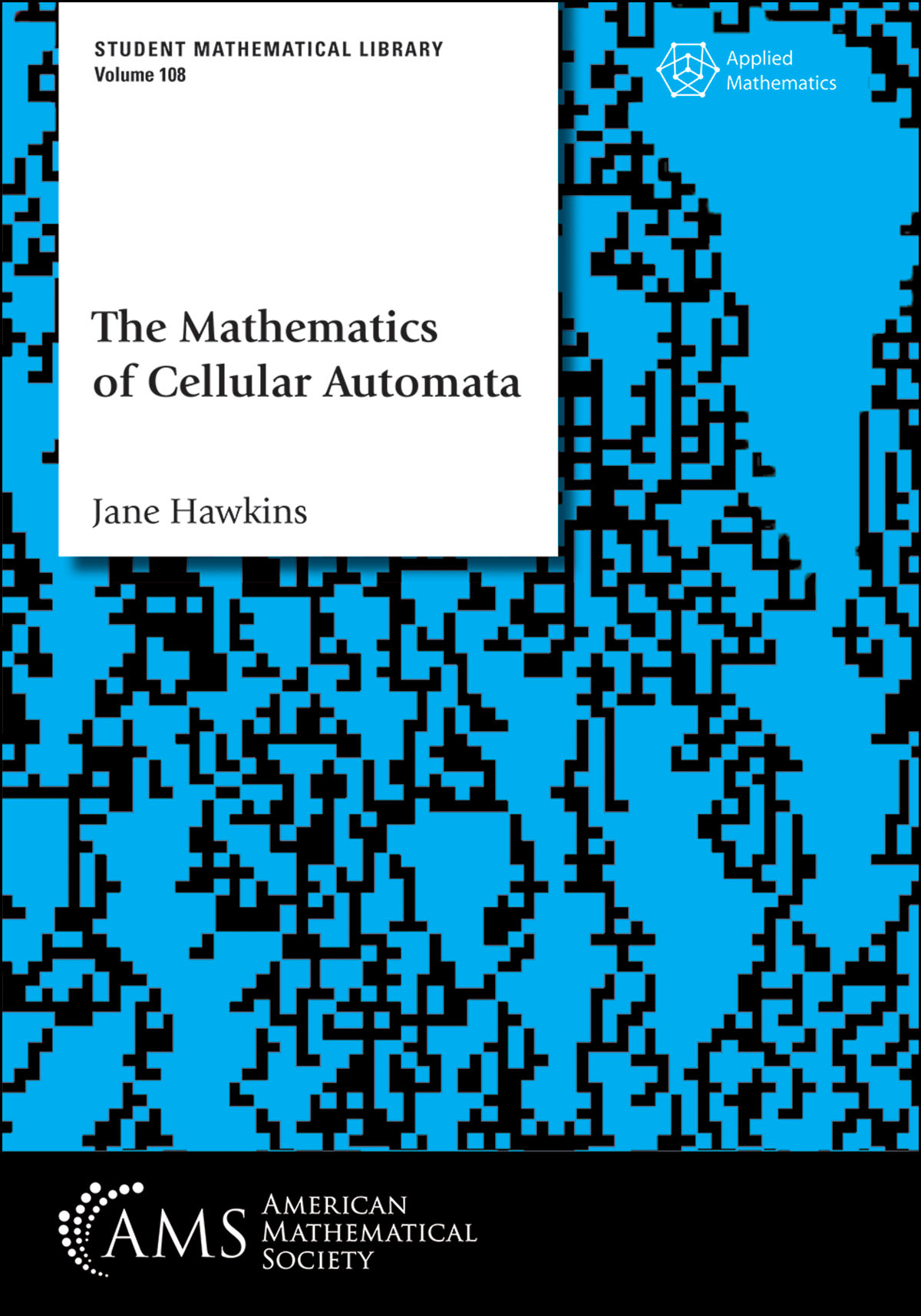
- Author: Jane Hawkins
- Series: Student Mathematical Library
- Publisher: American Mathematical Society
- Publication Date: 03/21/2024
- Number of Pages: 228
- Format: Paperback
- Price: $59.00
- ISBN: 978-1470475376
- Category: textbook
[Reviewed by Bill Satzer, on 11/12/2024]
This book is part of the AMS Student Mathematical Library series. Its goal is to introduce advanced undergraduate mathematics majors to dynamical systems via a course that focuses on cellular automata.
A cellular automaton, roughly speaking, can be regarded as a regular grid – in any number of dimensions - consisting of cells, each of which is in one of a finite number of states. An initial condition for an automaton is defined by assigning a state to each cell. A new generation is then determined according to some fixed rules. Those rules then determine the dynamics. One well known example of such an automaton (in two dimensions) appears in Conway’s Game of Life.
The rationale for using cellular automata to introduce dynamical systems is their inherent simplicity. They offer accessible maps that use simple rules to create interestingly complex and appealing graphical output. With cellular automata the student gets to see a variety of dynamical system behaviors from regular to chaotic or stochastic. The subject is approachable for undergraduates with a basic background of calculus and some linear algebra. The author also assumes that readers have seen some real analysis with rigorous treatments of limits and continuity.
The book concentrates first on one-dimensional cellular automata, and later moves on to two-dimensions, stochastic cellular automata, and then some more advanced topics. Open-ended projects – labs – designed for groups or individuals – often use computers to explore questions in greater detail.
The author proceeds by introducing the idea of symbolic dynamics (coding information in symbols from some symbol space and then following with successive iterations of a map that can represent time passing or successive experimental results.) The shift map on sequences of integers provides a primary example. Metric space topology and its tools are introduced, and from there the text moves on to the dynamics and classifications of cellular automata.
After treating one-dimensional cellular automata in some detail, the author consider two-dimensional forms and explores Conway’s Game of Life. Stochastic cellular automata – with probabilistic determination of the next transition rule to apply – come next. Then there is a brief chapter on advanced topics.
The book includes “a diverse set of topics”, as the author notes. Related concepts in analysis and topology are introduced with precise definitions. These include topics such as metric spaces and equicontinuity, for example, as well as limit sets and attractors.
This is a rigorous presentation with a full set of definitions, theorems and proofs. Besides the lab projects there are also many exercises. In this relatively short book, a lot of ideas are introduced and pretty quickly, one after another. Paradoxically, students with some experience with regular analysis on the real numbers may have more trouble than newcomers because familiar concepts may seem strange in this new context.
Several applications are described throughout. The first is a simple application to traffic. Later on, there are more sophisticated applications of stochastic cellular automata to modeling the spread of viruses such as HIV.
Bill Satzer (bsatzer@gmail.com), now retired from 3M Company, spent most of his career as a mathematician working in industry on a variety of applications. He did his PhD work in dynamical systems and celestial mechanics.
